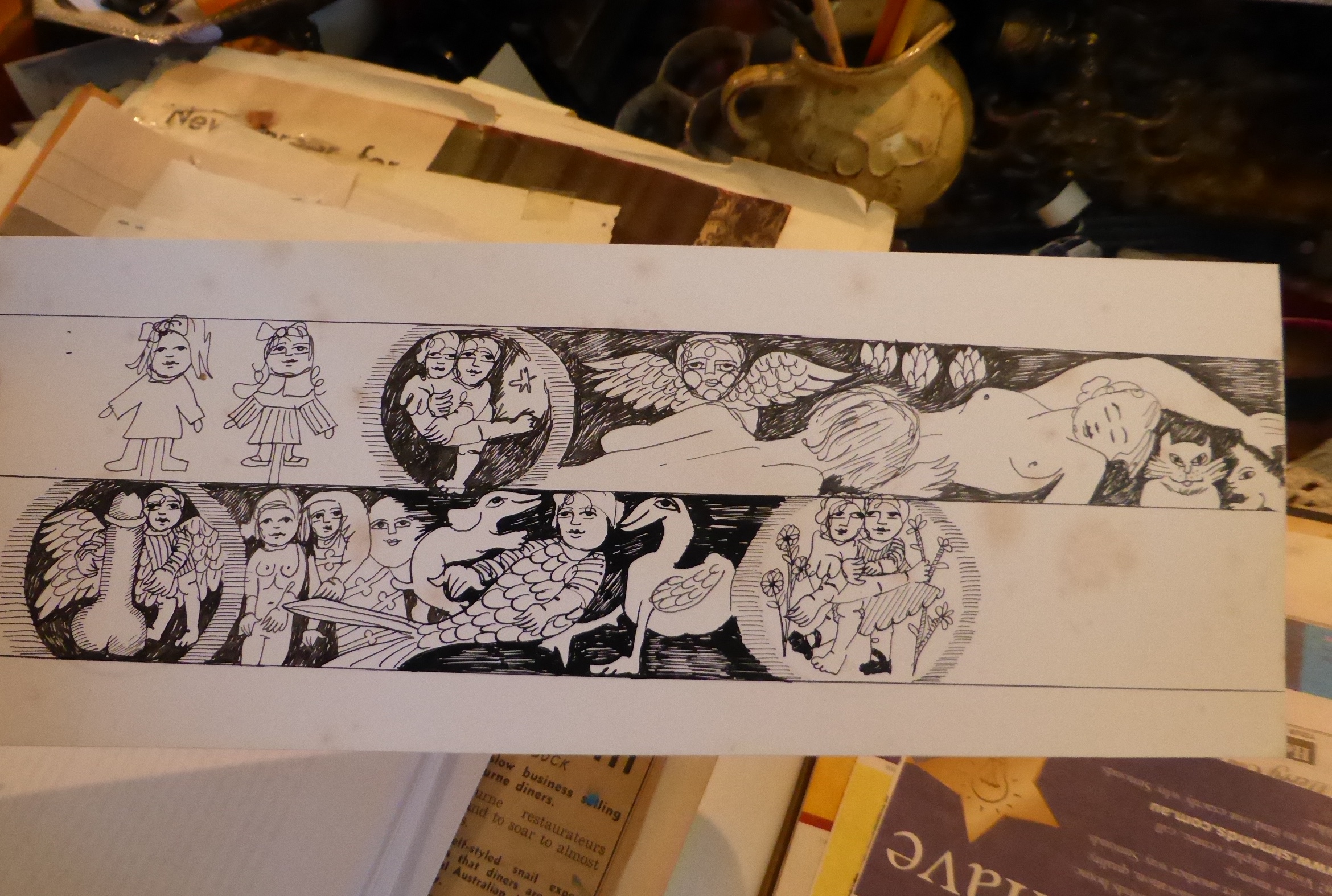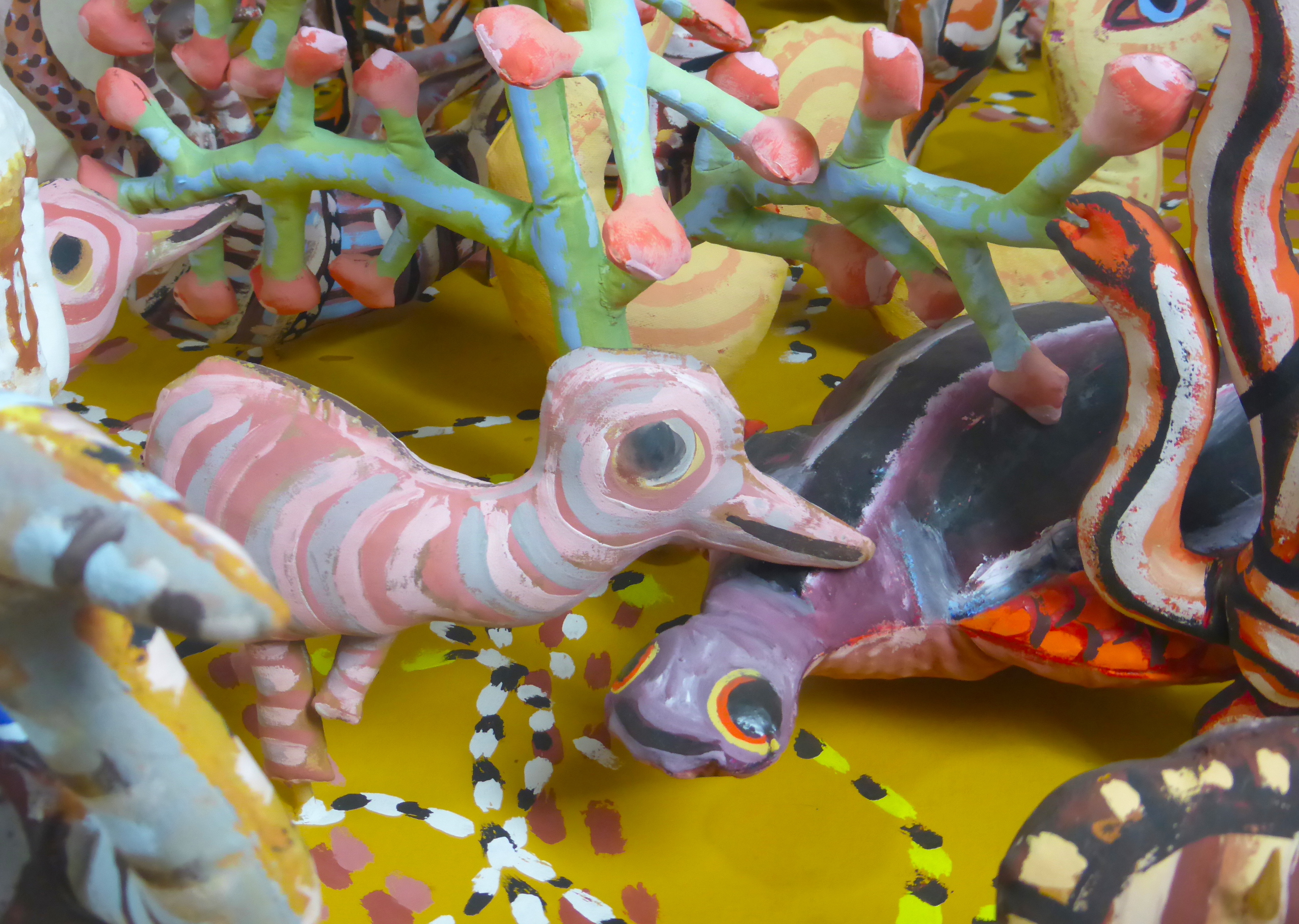
Arts & Culture
Confronting the feel, smell and taste of blood

Known for her bold and bright work, artist Mirka Mora was a trailblazer for women artists in the 70s, bringing ‘feminine techniques’ to the forefront of art
Published 27 September 2019
Mirka Mora was one of Melbourne’s best loved artists, renowned as much for her bohemian personality as for her art.
A unique feature of her production is the variety of her artistic media; rarely has an artist worked as seamlessly between techniques, over six decades, as Mirka did.

She elaborated her signature processes in the decade following her separation from husband Georges in 1970, mixing textile and paint in her soft sculptures and embroideries; they made her famous, but at the same time had an impact on her critical reception in Australia.
It’s easy to forget that being a successful woman artist in the 70s was an exception, even more so when working with fabric. Historically, gender and artistic media have always been linked.
Hard materials like metal and stone, which require physical force to work them, are regarded as masculine; while malleable and less physically challenging materials are regarded as feminine.

Arts & Culture
Confronting the feel, smell and taste of blood
Add some patriarchy to the mix, with the traditional education for women involving embroidery, sewing and raising a family, and the challenge becomes bigger.
Today, when it is commonplace to see crocheted sculptures in art galleries, these materials are no longer considered only as ‘crafty’. However, this approach to art was still experimental in the 1970s when Mirka started her textile works. Art history, says historian Whitney Chadwick, “honoured certain materials and processes instead of others”. The rise of ‘feminine’ techniques in the art scene in the 1970s represents a shift (a revolutionary one, often intended as such by the artists) and disrupted the established order, positioning textile at centre stage.
Mirka, who was born in 1928 and only passed away in 2018, didn’t wish to be active in the feminist movement, saying “once a woman does this sort of thing, she is losing her charm”. Nor did she make any apologies for using textile and threads.

Despite this non-political stance, Mirka participated in a de facto way in the feminist movement through her media, her imagery and her attitude to art, and in the broader movement that aimed to ‘de-sacralise’ art – to make it more accessible, less a preserve of the elite.
She had an idea: changing the perception of sewing and embroidery as crafts, relish the qualities of the materials and combine them with painting, and above all make no distinction between artist and craftsperson.
In the same period, American artist Judy Chicago created The Dinner Party (between 1974 and 1979, the most famous feminist artwork of the time. It celebrated important women of world history with embroidered runners and painted porcelain plates, using stylised vaginal imagery that scandalised part of the audience, but contributed enormously to bringing attention to women’s voice in the arts.

Arts & Culture
Why Germaine Greer was filmed naked in a bathtub of milk
Mirka’s textile works were therefore perfectly right socially and artistically.
She designed and stuffed textile creatures and painted them with oil prepared from ancestral recipes, putting together craft and Old Masters.
She embroidered virtuosi compositions mixing paint, stuffed textile, and exquisite stitching work, and brought them to the walls of art galleries.
They aren’t always as innocent as they seem. While keeping with Mirka’s usual mythology and fantasy-inspired themes, they also include explicitly erotic motifs: winged penises and love-making creatures turned into dolls, a pattern of little vaginas as decorative frames for a stern-looking girl. Of the work, Mirka said “she still has to discover herself”.
The irony of adding such details in a medium that is traditionally taught to girls to perfect their education as wives and daughters isn’t lost; the gently subversive message only gains strength because of the impeccable technical execution.

The public loved them, but some of the critics did not take them seriously.
With her frilly style of dress, her textile works and her mischievous behaviour, Mirka was catalogued by a part of the press as a playful figure refusing to grow up.
Instead of regarding her materials as revolutionary, they still saw them as symbols of domestic leisure and childhood, and felt uncomfortable with a woman’s evocation of sexuality in a delicate and feminine media, acidly describing it as “not so much cloying as unnerving”.

Arts & Culture
The joy of a first commission
Only later, with exhibitions showing paintings and soft sculptures, and public commissions of large murals, did Mirka achieve more recognition as an artist.
According to recent exhibitions catalogues, women’s contribution to the international art scene was often side-lined or overlooked as a result of their choice of materials.
Mirka’s omission from major Australian art books lends credit to this interpretation.
But, for curator Paula Furby, her “unconventional art practice – with her many forays into fabric media that allowed her another dimension for rich play – has challenged the high seriousness of modernism”.
Mirka cleverly used threads and needle to her advantage.
Far from confining her to the domestic sphere, they provided Mirka with exactly the opposite experience.

Her textile production gave her the means of succeeding as a single woman, through her workshops, her sales of embroideries and soft sculptures, and contributed significantly to the construction of her artistic identity.
Not many women at the time decided to embrace art as she did, observing a distance between themselves and their family life, and developing a career outside of the mainstream art movements.
Quietly making the choices that suited her best without any need for political resonance, Mirka focused on her art and her public image, and how best to communicate it.
That public image may seduce or annoy, but Mirka nevertheless represented the epitome of freedom for a woman of that time and became a role model for many.
Dr Sabine Cotte’s book Mirka Mora: A Life Making Art published by Thames & Hudson in association with State Library Victoria is available now.
Banner: Lady with Horns, soft sculpture, by Mirka Mora, private collection/Sabine Cotte